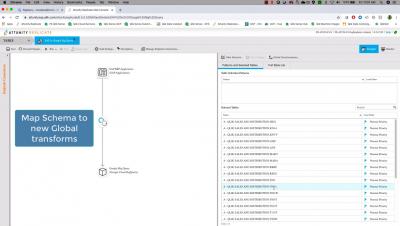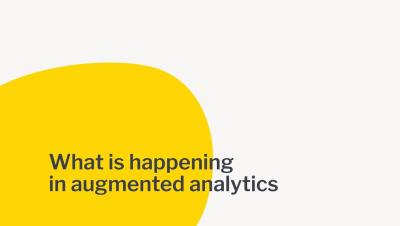Systems | Development | Analytics | API | Testing
BI
Integrate SAP and Google BigQuery with Qlik Replicate
Distributed model training using Dask and Scikit-learn
The theoretical bases for Machine Learning have existed for decades yet it wasn’t until the early 2000’s that the last AI winter came to an end. Since then, interest in and use of machine learning has exploded and its development has been largely democratized. Perhaps not so coincidentally, the same period saw the rise of Big Data, carrying with it increased distributed data storage and distributed computing capabilities made popular by the Hadoop ecosystem.
What is happening in augmented analytics
Augmented analytics is when you take what was traditionally a very manual workflow and automate it. This gives you the ability to analyze data far more rapidly and to package up changes for humans to interpret. Essentially you’re augmenting a human experience, so rather than spending all your time looking for a needle in the haystack, the machine finds the needle and gives it to you.
What is happening in augmented analytics?
The Real Role of Robotics in Retail
Automation and robotics in retail is rapidly changing the retail landscape – so much so that there are clearly winners and losers. I’m not talking about the war between brick and mortar stores and digital marketplaces, but rather I’m talking about the retail digital revolution where the winners are delivering greater than 4.5% comparable store/ channel sales growth compared to their brothers that have not embraced automation and robotics.
From 0 to Query with Cloudera Data Warehouse in CDP
Re-expressing Your Data
For this blog post, I’m going to take a step back and not go into data visualization best practices. Rather, I’m going to explore what you can do with your data before arriving at a final visualization – what I like to call “re-expressing” your data. Accordingly, we are going to look at the topic of transforming your data.
You can trust us: we are HIPAA compliant
Can you keep a secret? What will it take for me to trust you to keep and protect a secret that I share with you? If you are a friend or family member, I may not need more than you saying “Yes”, but if I don’t know you, I will likely want additional guarantees or proof that I can trust you. This is particularly true if you are an organization handling personal information about me.
Maximizing performance of Apache Kudu block cache with Intel Optane DCPMM
Intel Optane DC persistent memory (Optane DCPMM) has higher bandwidth and lower latency than SSD and HDD storage drives. These characteristics of Optane DCPMM provide a significant performance boost to big data storage platforms that can utilize it for caching. One of such platforms is Apache Kudu that can utilize DCPMM for its internal block cache.









